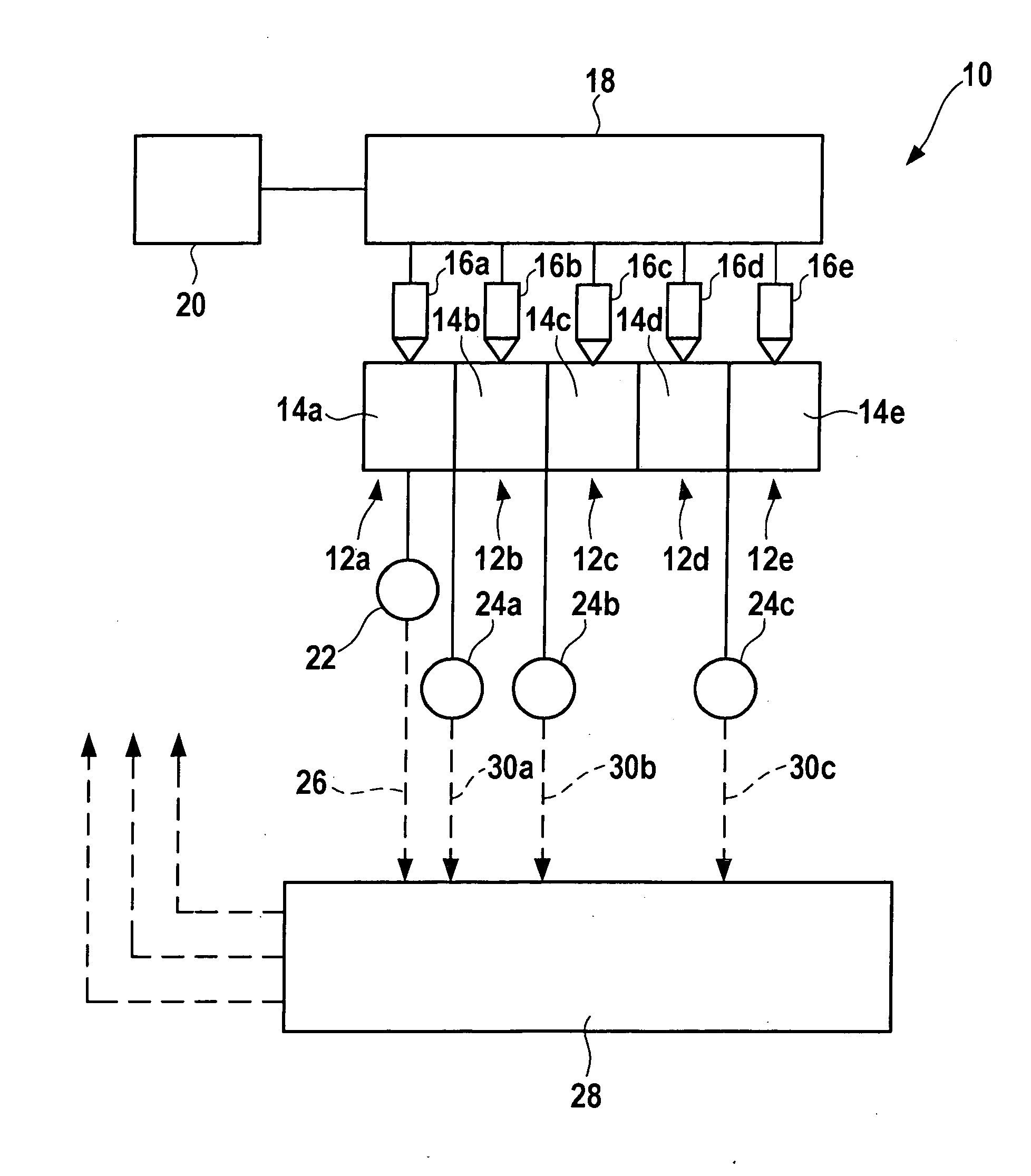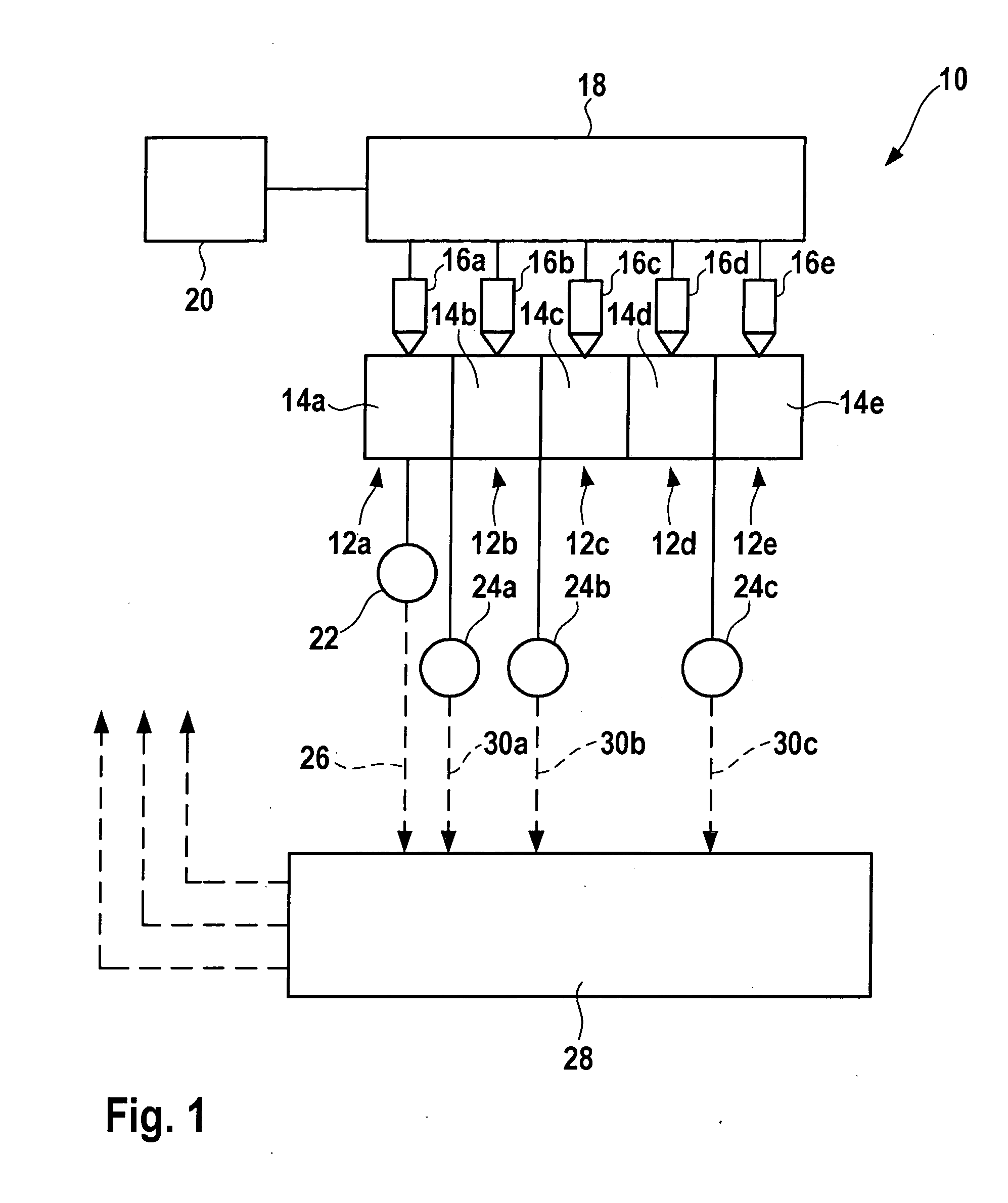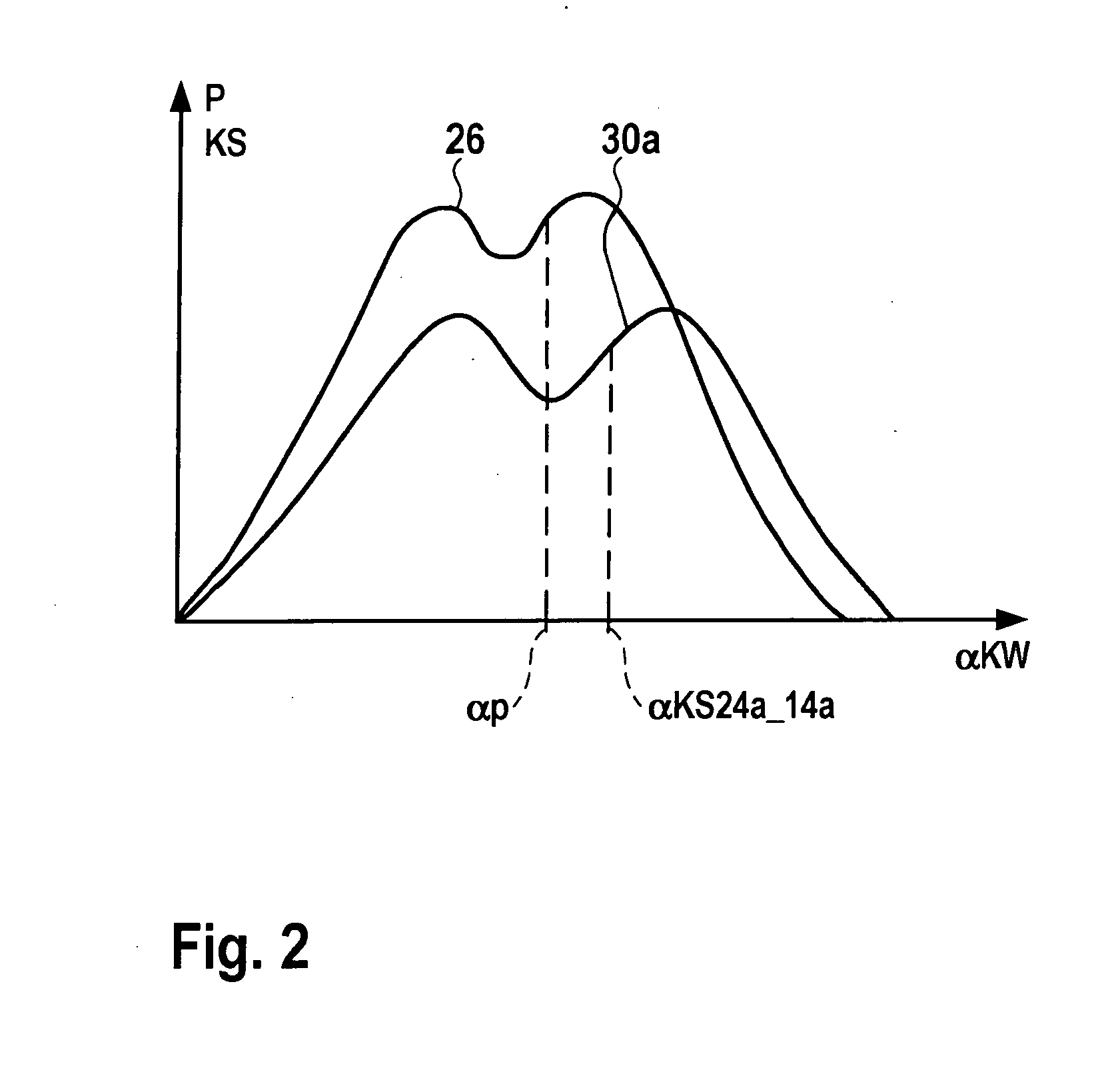Method for operating an internal combustion engine
a technology of internal combustion engine and combustion chamber, which is applied in the direction of machines/engines, electric control, instruments, etc., can solve the problems of short ignition delay in all cylinders, and achieve the effects of low accuracy, cost-effective and simple installation, and greater tolerances and dri
- Summary
- Abstract
- Description
- Claims
- Application Information
AI Technical Summary
Benefits of technology
Problems solved by technology
Method used
Image
Examples
Embodiment Construction
[0020] An internal combustion engine, which is generally identified by numeral 10 in FIG. 1, includes a total of five cylinders 12a, 12b, 12c, 12d, and 12e, which have the respective combustion chambers 14a, 14b, 14c, 14d, and 14e. Fuel is directly injected into combustion chambers 14a-14e via respective injectors 16a-16e, which are connected to a shared fuel high-pressure accumulator (rail) 18, which in turn is supplied with fuel by a high-pressure pumping system 20.
[0021] The pressure in combustion chamber 14a of cylinder 12a designated as guide cylinder is detected directly by a first sensor, namely a pressure sensor 22. A second sensor, designed as a structure-borne noise sensor 24a, is situated between cylinders 12a and 12b. There is a further sensor, designed as a structure-borne noise sensor 24b, between cylinders 14b and 14c, and a third structure-borne noise sensor 24c is situated between cylinders 12d and 12e. Pressure sensor 22 delivers a pressure signal 26 to a control ...
PUM
 Login to View More
Login to View More Abstract
Description
Claims
Application Information
 Login to View More
Login to View More - R&D
- Intellectual Property
- Life Sciences
- Materials
- Tech Scout
- Unparalleled Data Quality
- Higher Quality Content
- 60% Fewer Hallucinations
Browse by: Latest US Patents, China's latest patents, Technical Efficacy Thesaurus, Application Domain, Technology Topic, Popular Technical Reports.
© 2025 PatSnap. All rights reserved.Legal|Privacy policy|Modern Slavery Act Transparency Statement|Sitemap|About US| Contact US: help@patsnap.com



